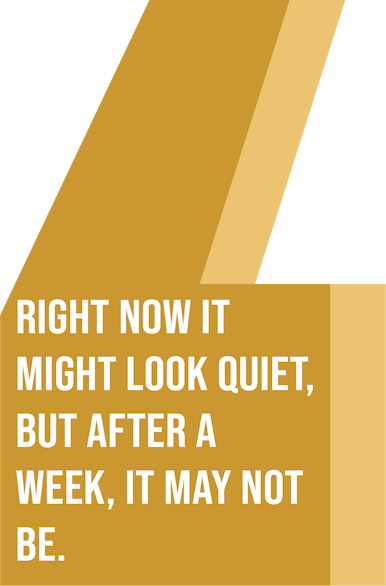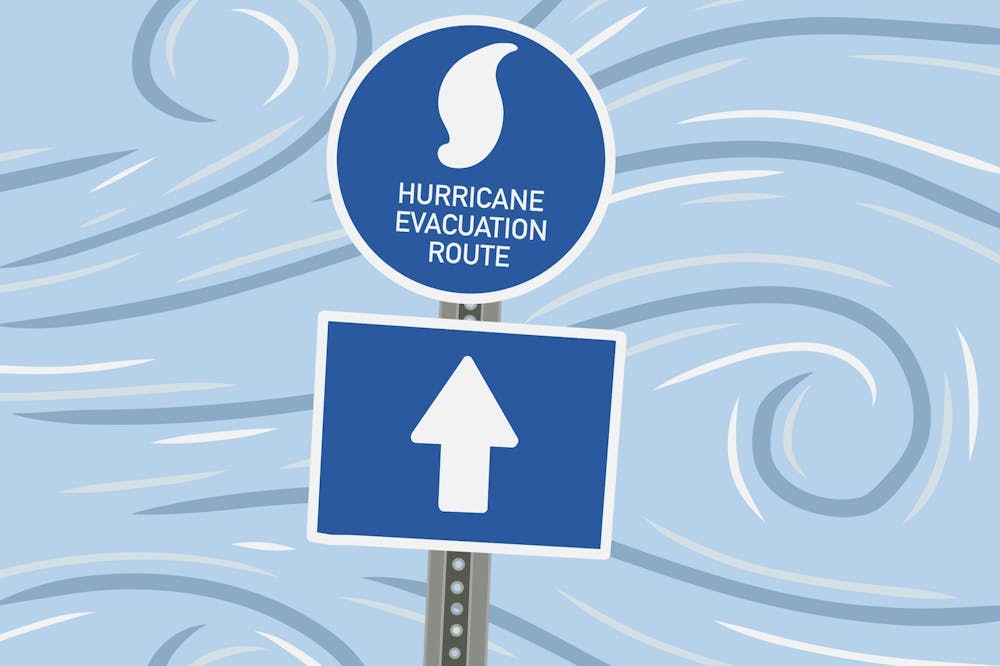The National Oceanic and Atmospheric Administration (NOAA) has predicted another “above-normal” hurricane season for 2025, following a 2024 season that produced two devastating hurricanes for the Southeast.
Hurricane Helene slashed through Georgia, the Carolinas and Tennessee, leaving thousands without power and unleashing devastating floods. Hurricane Milton then formed in the Gulf of Mexico, quickly reaching Category 5 status before pummeling South Florida as a Category 3.
Although above-average, the 2025 hurricane season is predicted to have fewer named storms than 2024. According to NOAA data from 1991 to 2020, the average number of named storms per season is 14. For the 2025 season, NOAA predicts 13 to 19 total named storms, of which six to 10 are predicted to reach hurricane status. Three to five are predicted to reach major hurricane status, or Category 3 to 5.
NOAA predicted the 2024 hurricane season to have 17 to 25 named storms, eight to 13 hurricanes and four to seven major hurricanes. By its end, the 2024 hurricane season saw 18 named storms, 11 hurricanes and five major hurricanes, all within NOAA’s predicted ranges.
The peak of the Atlantic hurricane season runs from late August to early October. One major hurricane, Hurricane Erin, formed in mid-August. The storm narrowly missed the Southeast, bringing coastal flooding to the Outer Banks of North Carolina and Virginia.
2025 hurricane season
2025’s lower storm prediction is the result of multiple factors, such as cooler ocean temperatures and African dust, said Cary Mock, a professor of climatology and hurricane researcher at USC.

African dust creates a dry environment that impedes storm development, Mock said.
An above-average hurricane season does not mean South Carolina will be hit by a hurricane. The number of hurricanes per season that impact South Carolina has varied over time, he said.
“We've had a hurricane season where we had two major hurricanes in one year. Only once, actually — that was 1893,” Mock said. “But we've gone through periods where for several years there isn't a hurricane. So it really varies.”
NOAA forecasters cannot predict where or when a hurricane will hit before it forms.
South Carolina has not seen a major hurricane make direct landfall since Hurricane Hugo in 1989, Mock said.
The Atlantic is quiet at the moment, but activity can begin quickly, Mock said.
“Right now, it might look quiet, but after a week, it might not be,” he said.
Preparedness and safety
Director of the Palmetto Poison Center Jill Michels said the center’s cases increase significantly during and after hurricanes hit the state. Poisonings from carbon monoxide, gasoline, food and more spiked during Hurricane Helene, according to statistics from the Palmetto Poison Center.
If a power outage occurs during a hurricane, students should not operate gas-powered generators inside or near their residence, Michels said. Generators produce the colorless and odorless gas carbon monoxide and should be operated at least 20 feet away from a residence, she said .
Students who live off-campus should make sure they have an adequate supply of water and non-perishable food, Michels said. She also recommends that students who regularly take medications have at least a week’s worth prior to a storm.
Once a storm is gone, hazards linger. The Palmetto Poison Center received multiple cases of insect and snake bites that occurred during the clean-up of debris, Michels said.
Students can call the Palmetto Poison Center at 1-800-222-1222 at any time during a hurricane, Michels said. The center can refer callers to urgent or emergency care if needed.
National Weather Service
The National Weather Service (NWS) Columbia office provides weather forecasts and issues weather warnings to the public. NWS Columbia also provides weather updates to USC’s emergency management, according to John Quagliariello, warning coordination meteorologist for NWS Columbia.
“They're using the information that we're pushing out to them through briefings and other material, and they're making the decisions to keep students safe,” Quagliariello said.
The NWS uses multiple methods to measure and forecast hurricanes. Planes are flown into the storms, weather balloons are raised around the world to gauge the atmosphere and radar is used as storms approach landfall, Quagliariello said. The collected data is loaded into computer models at the NWS’s National Hurricane Center to make forecasts, he said.
When a hurricane approaches, NWS Columbia works to inform the public of how to prepare and the threats they may face, Quagliariello said.
“We work very closely with emergency management partners, state officials,” Quagliariello said. “Working with them and through them to kind of get the word out so people can make those better decisions.”
Forecasters will work rotating 12-hour shifts, while a meteorologist is deployed to South Carolina’s State Emergency Operations Center. There, they work closely with state and local agencies to make decisions, Quagliariello said.
Quagliariello recommends USC students stay informed through reliable sources. Government officials, the NWS’s website and social media, as well as updates from USC’s emergency management, are all sources USC students can use to stay informed, Quagliariello said.
Students can find up-to-date information through USC’s Carolina Alert system during hurricanes and other emergencies.

